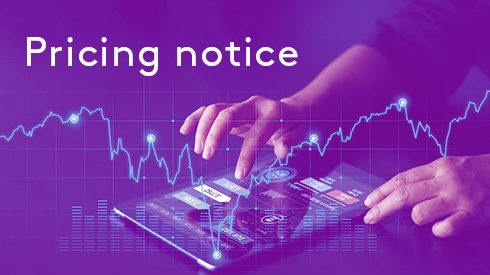The lithium hydroxide futures at CME Group (CME) have seen an acceleration of volume and open interest at the start of the new year 2024, with open interests closer to 16,000 lots by January 10. The average daily volume of CME lithium hydroxide futures contracts has grown from 174 per day in November to 195 lots per day in December and nearly doubled to 358 lots per day in January 2024. Each contract controls one metric ton.
Besides futures, the lithium hydroxide options have also traded recently, with a put option premium of $0.85 for a strike price of $16 per kg for the third quarter of 2024.
The underlying settlement for both lithium hydroxide futures and options at CME is the monthly average of daily publication of battery-grade lithium hydroxide CIF China, Japan, and South Korea by Fastmarkets. These futures contracts are used for commodity hedging, speculation, and arbitrage trading.
The latest price of lithium hydroxide was $14.75 per kg on January 10, a fall of 4.8% since the start of January. Prices are down about 75% year over year.
The GFEX effect
Substantial trading volumes on the Chinese Guangzhou Exchange are one impetus that has driven higher volumes.
January marked the first month of physical delivery of lithium carbonate futures at the China Guangzhou Exchange (GFEX), and the expectation of a “short squeeze” did not happen with the ongoing smooth delivery of warrants.
According to the GFEX website shown on January 10, 8,177 tonnes of lithium carbonate have been delivered within the price range of 91,250 to 101,400 yuan per tonne. And there are 1,990 lots of open interests for the January contract that would be closed before the last trading day.
The last trading day for the January lithium carbonate contract at GFEX is the tenth trading day of January, and physical delivery is expected to be completed by the third working day after the last trading day.
According to market sources, the delivery materials were mostly battery-grade from brine, lepidolite, and spodumene-smelter Sheng Xin Lithium.
The exchange required a 25,000-yuan discount for industrial grade to warrant, but the spot market only saw less than a 10,000-yuan difference; therefore, few materials from industrial grade were delivered to warehouses.
On the same day, about 11,427 tonnes of lithium carbonate were registered as warrants at GFEX-approved warehouses.
Taking physical deliver
The futures contracts listed on GFEX differ from the CME futures in that you must take or make physical delivery if you hold the contract into the delivery period. CME futures contracts are financially settled versus the Fastmarkets lithium hydroxide battery grade index. The CME contracts are cash-settled.
To take or make physical delivery of lithium carbonate on GFEX, you must purchase a contract of lithium carbonate on GFEX or previously owned lithium carbonate that can be delivered to a GFEX warehouse.
Instead of trading out of your position, you hold your contract beyond the expiration date. If you plan to deliver lithium carbonate, you would sell lithium carbonate on the GFEX and hold that position past the expiration date. After expiration, a seller and a buyer will be matched up together.
The seller, who is short a GFEX lithium carbonate position beyond expiration, must provide a specific volume of inspected lithium carbonate to a delivery warehouse. As we approach the expiry of the January contract, more and more lithium is being delivered into exchange-approved warehouses against sold contracts. The requirements for trading on GFEX are stringent.
Market volatility has been robust
In early December last year, the market was on a roller-coaster with two days of declining to the daily limit and two days of rising to the limit, as the uncertainty lingered over whether sufficient qualifiable materials were on the market to be under delivery.
However, the market order was gradually restored with increased registration of warrants at warehouses and minimizing corner risk.
According to the CFTC commitment of traders report on January 2, about 25% of open interests are in the hands of physical participants, including producers, merchants, processors, and users.
According to market sources, several commodity trading funds in Asia are heard to be involved in both GFEX and CME lithium futures trading.
The Fastmarket research team expects some restocking in the second quarter, which should result in a mild price recovery and a further downtrend in the second half of the year, and prices will more likely remain under pressure into 2025.
However, there is still uncertainty in the market as to whether the oversupply will be resolved in 2024 or 2025, as lower prices continue to constrain lepidolite production and the pace of some new projects with uncompetitive production costs. All these uncertainties have driven the supply chain to hedge their price exposures with futures and options contracts at various exchanges.
Besides CME and GFEX, the Singapore Exchange and the London Metals Exchange launched battery metal futures contracts, including lithium carbonate, hydroxide, cobalt metal and cobalt hydroxide.





